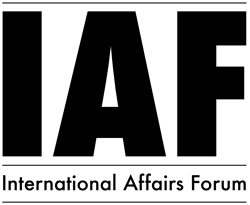| Tue. July 08, 2025 |
 |
|
||
|
||||
| ||||
By Debalina Ghoshal.
On 7th of April, 2014, the Bharatiya Janta Party (BJP) declared if they came to power, India could “revise” its nuclear doctrine. While some would welcome this change, many would oppose it. However, on April 17th, Modi stated that the no first use reflected India’s “cultural reflection” and that there would no revision in the doctrine. This article aims to justify India’s stand on its no-first use doctrine.
Over the years, as Pakistan stuck to its first strike policy and also developed tactical nuclear weapons, there was much hue and cry amongst several strategic thinkers and military leaders to alter India’s nuclear doctrine. It was also felt that Islamabad was taking advantage of New Delhi’s restraint in using nuclear weapons first to promote proxy wars in India.
The question that would arise is, can India, by adopting a first strike doctrine, change Pakistan’s stance on conducting proxy wars in India? The answer is probably ‘no’. In fact, Pakistan views India’s no-first use policy as a farce. On the other hand, adopting a no-first use policy enables New Delhi to keep the nuclear threshold high, especially as Pakistan tries to lower the threshold by developing tactical nuclear weapons, the Hatf-9 with 60km range.
It must also be noted that New Delhi is not bordered by just one nuclear weapon state. China adopts a no-first use policy and, in spite of calls for Beijing to revise its no-first use doctrine, it is unlikely to do so. Hence, if New Delhi gave up its no-first use doctrine, it could give Beijing a chance to adopt a first strike policy and shift blame on India. In fact, India’s adoption of a first strike policy would be an easy excuse for Beijing to give up its no-first use doctrine against the United States and Russia as well.
Moreover, India has always promoted herself as a responsible nuclear weapon state. Hence, a first strike policy would severely damage India’s reputation as a responsible nuclear weapon state. This means that while India would not be resilient to any nuclear attack by its adversaries, at the same time, it will not act as a villain who tries to bully its adversaries by threatening to strike first.
India has always projected herself as the firm supporter of nuclear disarmament. She has been the only state to call for a Nuclear Weapons Convention that would ban and eliminate nuclear weapons. However, it is India’s no-first use stance that enables New Delhi to vouch for a nuclear weapons free world. In fact, New Delhi must also promote the concept of global no-first use. In 2014 Prime Minister Manmohan Singh proposed a global convention on ‘no-first’ use to eliminate nuclear weapons. Singh identified nuclear weapons as a tool to strengthen deterrence and hence, vouched to reduce the importance of nuclear weapons in international politics.
It is India’s no first use doctrine that has enabled both Pakistan and India to keep their nuclear arsenal in a de-mated posture rather than a ready deterrent posture. This means nuclear warheads are not mated with the delivery systems. This reduces the chances of nuclear terrorism in Pakistan and also reduces the likelihood of an accidental launch of a nuclear weapon. A first strike policy by India may not have allowed Pakistan to keep their nuclear arsenal in a de-mated posture.
There is also the issue of ballistic missile defense being developed by India which is highly destabilizing in nature and hence, New Delhi would continue to resort to using its no-first use doctrine in order to prevent instability in the South Asian region. A first-strike policy, coupled with a ballistic missile defense system, could provoke Pakistan to launch a nuclear pre-emptive strike against India.
By adopting a no-first use doctrine, New Delhi has made it evident that nuclear weapons are indeed the weapons of last resort. Abandoning this doctrine would make it evident that India considers the option of using nuclear weapons in the initial phases of the conflict. In fact, India’s nuclear strategy is dependent on punitive retaliation. This strategy itself acts as deterrence against Pakistan.
While many believe that a first strike policy gives advantage to the state which has weaker conventional capability, this is not the case. Beijing for instance, has a weaker conventional force compared to Russia and the United States. However, it still adopted a no-first use policy and a strategy of credible minimum deterrence. Hence, as long as nuclear deterrence is credible, weaker conventional forces viz-a-viz a state’s adversary will not be a concern. In fact, the mere possession of nuclear weapons negates any conventional superiority enjoyed by the adversary.
Towards a Successful Counter Strike Strategy
India’s strategy of maintaining a ‘minimum credible deterrent’ should be married successfully with its no first use doctrine. Instead of focusing on adopting a first strike policy, India must work towards strengthening its counter strike and second strike capability. India’s third leg, its sea based nuclear deterrence, must be strengthened at the earliest. Long range submarine launched missiles could enable New Delhi to enhance the survivability of its nuclear arsenal. As India’s command and control would continue to get robust, the no-first use doctrine would also be strengthened.
Conclusion
India must hence strive to strengthen its no-first use stance. At the same time, New Delhi must take the effort of making its neighbors believe in its nuclear doctrine through effective confidence building measures.
Debalina Ghoshal is an Associate Fellow at the Centre for Air Power Studies, Western Air Command, New Delhi, India.
| Comments in Chronological order (1 total comments) | |
| Report Abuse |
|
|
| Please enlighten me by answering to the following questions:
1- How does mating increase the chances of nuclear terrorism? 2- How is Pakistan cashin |
|
| Contact Us | About Us | Donate | Terms & Conditions |
|
All Rights Reserved. Copyright 2002 - 2025